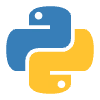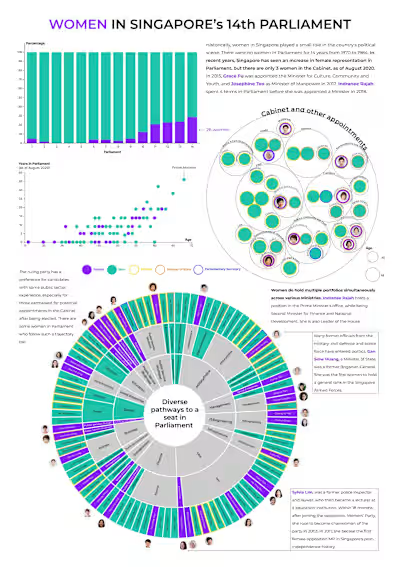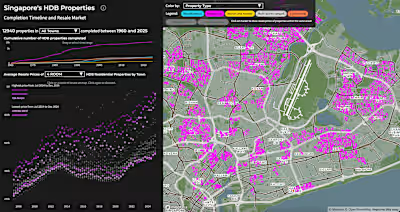Constructing a Knowledge Graph from unstructured data with LLMs
This article aims to chronicle my process in understanding LLMs and their practical applications as a web developer. I am eager to expand my expertise beyond just the rendering of graphs but to the construction of it from unstructured information. Since newer LLMs, such as OpenAI's GPT series, have made conducting the information extraction pipeline much easier, even bypassing the need to have a deep understanding of Natural Language Processing algorithms and processes (knowledge of basic NLP techniques is still useful), I thought to give it a shot.
LLMs can also be used in tandem with existing Knowledge Graphs, as a natural language interface to a Knowledge Graph, to query and process information for applications such as chatbot. I intend to test this with my newly constructed graph with the end goal being a Q&A chatbot.
I am on the free tier on the OpenAI platform, which is subjected to rate limits on API usage. I am also restricted from using the gpt-4 model, so I will be using gpt-3.5.
Getting unstructured data and chunking it with LangChain
I will be creating a knowledge graph based off a single historical figure using OpenAI functions and storing it in a Neo4j database. I heavily reference this article by Tomaz Bratanic, but will be expanding it by adding and explaining alternative steps.
It is simple to extract information from Wikpedia with LangChain. I find that LangChain, a framework for developing applications powered by language models, makes the barriers to entry for beginners even lower.
Chunking is the process of breaking down large pieces of text into smaller segments. It helps to better contextualize the information fed into the LLM, optimizing the relevance of the response generated by the LLM. In Tomaz's article, he provided good reasoning behind his chosen chunk size.
Each chunk is fed into an LLM prompt to generate a response. We want a structured JSON object of entities and relationships to be returned, representing the knowledge graph.
The desired JSON structure is predefined and provided to the LLM through an OpenAI function call with LangChain, to restrain the LLM response as a standardized representation of entities and relationships we want extracted from the chunk of text and ready to be ingested into a graph database such as Neo4j.
The predefined structure can be in the form of Pydantic classes representing the schema for the entities and relationships, which can be imported with LangChain. Pydantic classes appear to be similar to type annotations with Typescript, serving the purpose of data validation and modeling.
Perhaps if Pydantic classes seem unfamiliar, providing a JSON Schema, also works. The JSON object must adhere to the specification. Be aware of the differences in Python data structures (eg. dictionaries) returned from both methods, that may require further processing steps in Python before ingestion into Neo4j.
Extracting structured information with OpenAI's gpt-3.5 model
We need to give the ChatOpenAI model some instructions. The fine-tuning and iteration of the instructions is called prompt engineering, which is a field with its own nuances that I intend to explore.
The main goal is to generate an output of entities and relationships that matches the predefined JSON structure through two main steps: Named entity recognition and Relationship extraction
To ensure the generated output is as clean as possible with accurate values, detailed instructions must be given. I found the ability to limit node or relationship types to be extracted very handy.
create_structured_output_chain is function in the LangChain library which forces the LLM to generate a structured output. Internally, it creates a function chain (LLMChain) and returns the LLMChain, which consists of a series of components to process user input.Store extracted information into Neo4j
Set up a Neo4j database locally and run it.
LangChain provides a Neo4j wrapper for graph operations called
Neo4jGraph. Create a new Neo4j graph wrapper instance.create_structured_output_chain returns an LLMChain. Run the chain on the given text, stored inside the variable document.page_content to generate a response.LangChain provides a utility function to 'fit' the response as a graph document, parsing and validating data. The graph document is then ingested into the Neo4j graph through the
add_graph_documents method, a convenient way of ingestion without the need to write Cypher code.We need to interate over the chunks, generate a response from each of them, then add the nodes and relationships to the graph.
Graph visualization
Let's visualize the output in Neo4j and check our results.
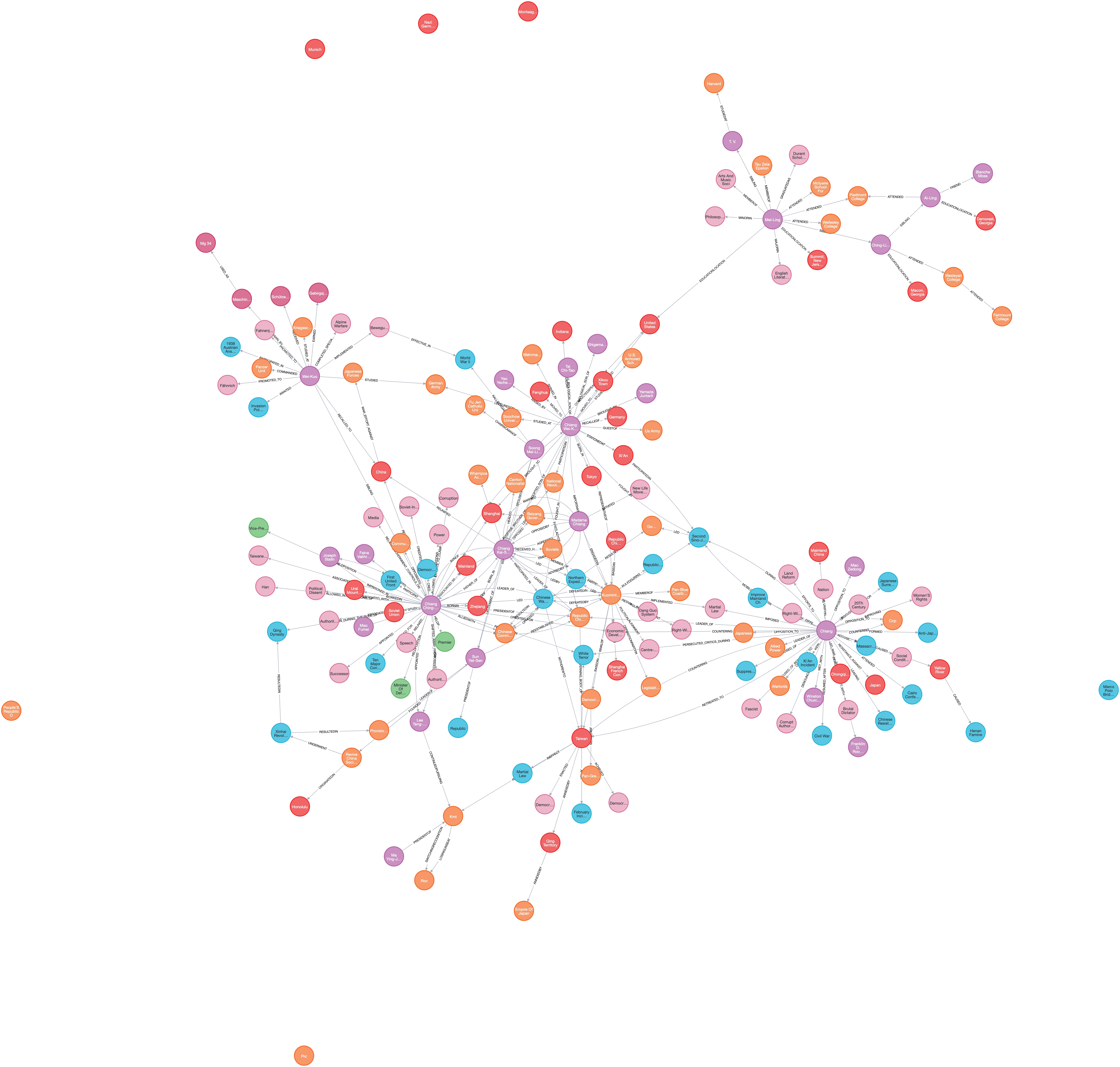
Graph as viewed in Neo4j
The prompt above does not perform coreference resolution at all, as we can see separate nodes for "Chiang", "Chiang Kai-Shek", "Chiang Wei-Kuo" and "Chiang Ching-Kuo". These three people share the same surname. In their Wikipedia pages, 'Chiang' is used to refer to each of them.
A possible solution is to run another LLM prompt on the response to merge nodes that represent the same person. However, in my example, this does not work because of the shared surname and inability to differentiate relationships belonging to the 'Chiang' node.
Fine-tuning the prompt may help, such as warning it about the problem through examples found in the document. I lifted the prompt straight out of Tomaz's article, albeit with some changes of my own, so was surprised to see that the model still did not perform coreference resolution. Perhaps, this is just a limitation of the less powerful gpt-3.5 model. I have yet to check the results generated by gpt-4 with the same prompt.
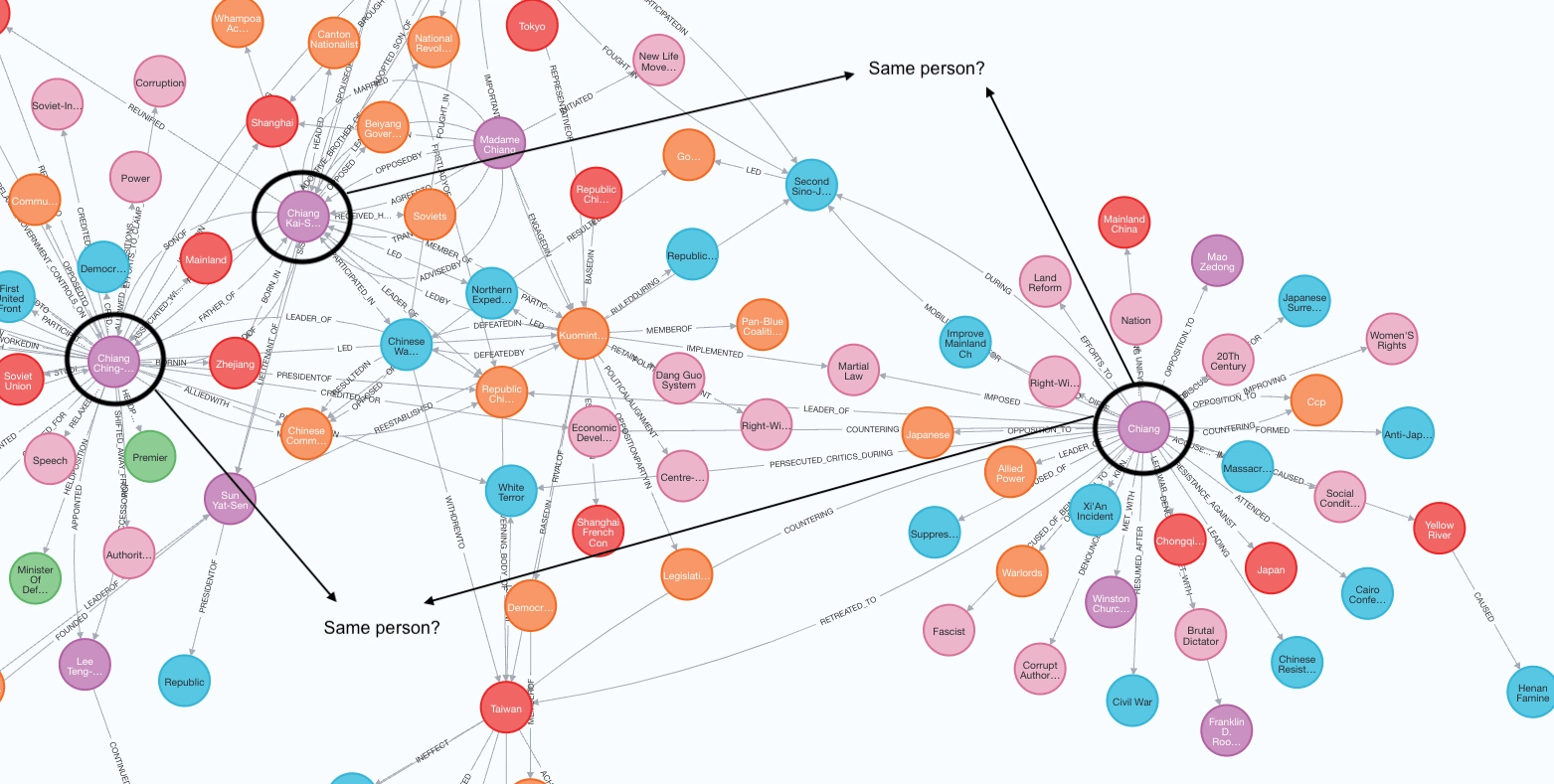
Name Entity Recognition error
Additional pre-extraction steps
Summarization
I like the simple flow, readability and effectiveness of the code above in constructing a graph from text. While researching, I found additional or alternative methods by others worth reviewing, and will attempt to explain them.
The goal here is to utilize an LLMChain to perform summarization of multiple Wikipedia pages first before extracting entities and relationships, which is done in a separate LLMChain. Passing all the text, even in chunks, into the LLM may not be most cost-effective and optimal way of generating the knowledge graph. The benefit of summarization is to provide the LLM more relevant and concise content. However if summarization is not done right, we may risk losing information worth extracting.
After splitting the Wikipedia pages into chunked documents, we first call the LLMChain on each chunk individually to generate an individual summary. This is the 'map' step. Then in the 'reduce' step, we combine those summaries into a single global summary.
This method failed with the OpenAI free tier with this error message:
RateLimitError: Error code: 429 - {'error': {'message': 'Rate limit reached for gpt-3.5-turbo in organization XXX on requests per min (RPM): Limit 3, Used 3, Requested 1.I believe this happened because all of the chunks are sent into the pipeline
MapReduceDocumentsChain without being queued. It could also be because there 5 and 3 of these chains finish within a minute.Why did I not encounter this error in my previous section?
create_structured_output_chain function, an LLMChain, is called once per chunk (ie. one API call per chunk). Since each chunk takes a few minutes to have a generated response and the function will only be called again when the previous LLMChain has finished, the 3 RPM limit is not reached.The pipeline above is wrapped in LangChain's
load_summarize_chain with chain_type="map_reduce".Tokenization
Another important consideration is text preprocessing, such as stop word removal, tokenization and stemming, to put the data in a clean and analyzable form. Tokenization is not the same thing as chunking!
The output of tokenization and chunking can be similar in terms of the units they represent (e.g., words, subwords, sentences), but their purposes and the information they capture are different. The goal of tokenization is to provide a structured representation of the input text that can be used for further analysis or processing.
It is recommended practice to perform tokenization before chunking. In the context of chunking, having a well-defined set of tokens simplifies the task of identifying and extracting meaningful syntactic units like noun phrases, verb phrases, or other grammatical constructs. It allows for a more focused analysis of the relationships between the tokens within the sentence.
Each model has its own context length also known as the maximum number of tokens that it can process. Tokenizing and counting tokens enable us to have a close control of how many tokens we are spending to avoid errors and unsuspected expenditures.
Initialize the tiktoken tokenizer with the encoder as
"cl100k_base". This is a specific tiktoken encoder which is used by gpt-3.5-turbo and gpt-4. Tiktoken was created for use with OpenAI's models, so while there are many other possible tokenizers, only use tiktoken if the LLM is from OpenAI.I reference directly from a section found in the "Data Preprocessing with LangChain" jupyter notebook from Pinecone's LangChain Handbook.
"gpt-3.5-turbo supports a context window of 4096 tokens — that means that input tokens + generated ( / completion) output tokens, cannot total more than 4096 without hitting an error. So we 100% need to keep below this. If we assume a very safe margin of ~2000 tokens for the input prompt into gpt-3.5-turbo, leaving ~2000 tokens for conversation history and completion. With this ~2000 token limit we may want to include five snippets of relevant information, meaning each snippet can be no more than 400 token long. To create these snippets we use the RecursiveCharacterTextSplitter from LangChain. To measure the length of snippets we also need a length function. This is a function that consumes text, counts the number of tokens within the text (after tokenization using the gpt-3.5-turbo tokenizer), and returns that number."
Open-Source alternatives to OpenAI Models
Besides OpenAI's GPT series of models, there are other open source LLMs, such as Mistral7b, which was created by Mistral AI, a research organization and hosting platform for LLM.
Mistral AI's family of 7B models can be used with LangChain. They can also be accessed and run locally with Ollama, a tool that allows you to run open-source LLMs locally on your machine. The benefit of doing so is doing away with the need to spend on API credits. The Open AI models cannot be accessed with Ollama.
Unlike OpenAI's modesl, Mistral7b does not offer function calls to create structured responses. You may use output parsers to structure LLM responses instead. You may also write your own Python function to transform the response to Cypher so that it can be ingested into Neo4j.
Other ideas: Knowledge Graph expansion
Despite having all the documents at hand, the recipe shared in my earlier section may not be the best way to construct a full and accurate knowledge graph.
An alternative way is construct a base graph from a subset of documents first to extract key entities. Next, input these entitities along with other documents into a subsequent LLM prompt to generate further entites and relationship
Recent Neo4j blogposts are a useful resource for gaining answers and inspiration for integrating knowledge graphs with LangChain and LLM applications.
Like this project
Posted Feb 6, 2024
I wrote a Python script, using the OpenAI GPT-3.5 model and LangChain, to construct a Knowledge Graph from unstructured texts that is ingestible into Neo4j.
Likes
0
Views
1.1K

